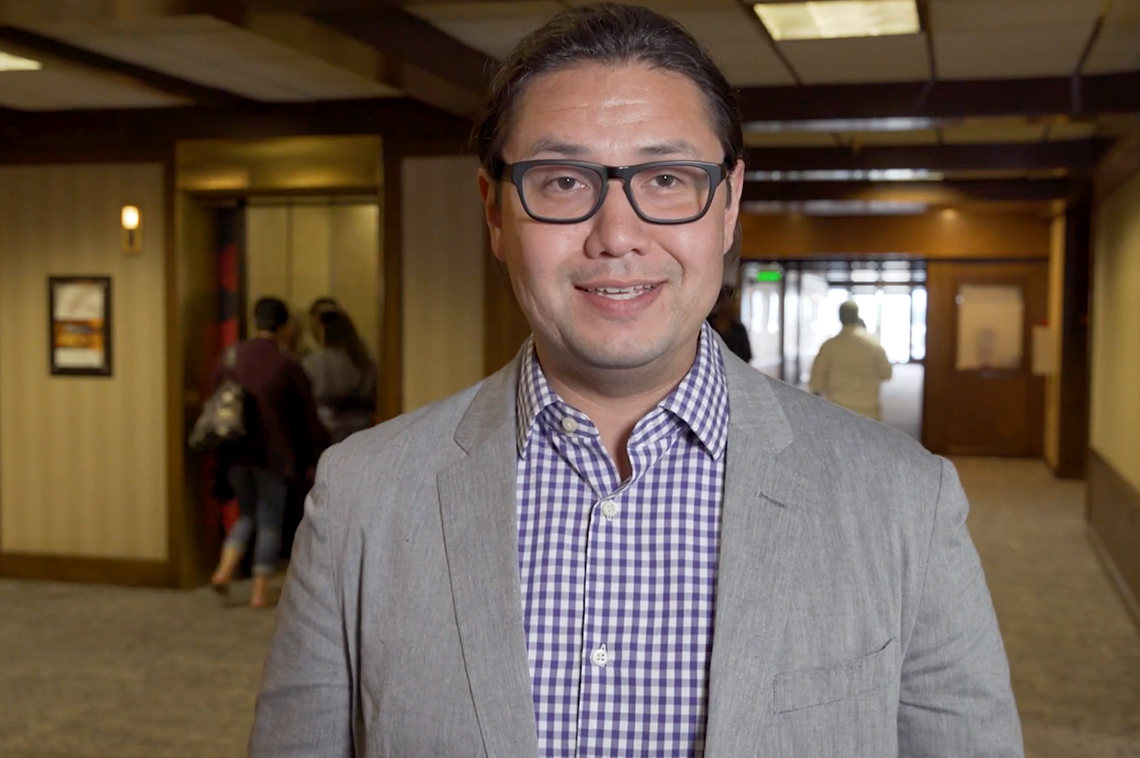
Our Humans of ArtPlace series takes its cue from the famed Humans of New York project. This month, as our blog tells stories of “the people behind creative placemaking,” we asked the driving forces behind three ingenious ArtPlace-funded projects to give us some personal insights on work, life, art, and place.
Joseph Kunkel is Executive Director of the Santa Fe-based Sustainable Native Communities Collaborative, which was founded in 2009 to advance the development of culturally and environmentally responsive housing design within American Indian communities. During his tenure, Joseph has leveraged millions in private and public dollars to advance tribal housing and sustainable development throughout Indian Country.
UPDATE: Joseph served on the Planning Committee for the Creative Placemaking Leadership Summit West, taking place February 7 - 9, 2019 in Albuquerque, New Mexico. ArtPlace will be there, too!
ArtPlace: At the 2018 ArtPlace Summit, you spoke on camera briefly about Native traditions and lifeways informing how you work as a designer—for example, sitting in a space and listening to a community as a part of your planning process, as opposed to going in with ideas to impose on them. Could you tell us about a time when you did this?
Joseph: As a native designer, I've approached this style of engagement, i.e. sitting and listening, because this was a way of learning passed down from generations past. Listening to your elders, older cousins, friends, mentors, etc. You learn a whole lot more by listening, rather than imposing your own ideas.
This was the same approach I used while working with the Santo Domingo Pueblo (Kewa Pueblo). With support from Enterprise Community Partners, I developed a series of engagement activities to better understand the needs of the community. You can find more about that in the publication Made with Love, which highlights methods that can be shared and replicated with other communities, both tribal and non-tribal.
During the engagement process, I took the community meeting physically out of the community center, and to the various sites we were focused on developing. This allowed the design team to hear directly from those who typically don't speak up in a formal community meeting setting. Through this process, more individuals were allowed the opportunity to have input into the planning and design, which eventually became a 41-unit artist-centric housing development and a 3,000-square-foot community center.
ArtPlace: The discipline of architecture has become closely linked with land ownership. Do you think architects today could benefit by viewing their work through more of a land stewardship lens? Have you seen an example of this shift?
Joseph: Historically, architecture—both the practice of architecture and the services of an architect—have been afforded to a select few, mainly those with the means to hire an architect. Such means are typically related to ownership, land ownership—or, how some frame a western, Eurocentric perspective of building, constructing, and eventually creating wealth.
For the clients we work with, the focus and conversations are much more complex. How one habitats, lives, or takes care of a place is very much rooted in the indigenous cultures and practices of land stewardship. In my language, Northern Cheyenne, there is no word for ownership. One does not own things, we take care of things, like land and one another, while traveling through this life. So there is a balance of how we think about this western/Eurocentric framework and our indigenous perspectives on life. Neither are going away, and as planners, architects, and designers working in Indian Country, we need to approach our work in a different way.
I feel this method and approach is how many indigenous practitioners think about their own work, and more should as well. The built environment impacts us all, and we need to be critical in how we plan, design, and develop because it has and will continue to impact those who are marginalized and at risk the most.
ArtPlace: Your organization, the Sustainable Native Communities Collaborative (SNCC), “helps tribal communities gain self-sufficiency, improve their impacts on the natural world, and develop healthy, green, culturally-responsive communities.” Can you describe the “culturally-responsive” aspects of one or two of your favorite SNCC projects? What do these design features look like, how do they work, in what ways do they reflect the culture of their users, etc?
Joseph: A culturally-responsive approach respects a community’s culture and identity and includes them in the work being performed. When we talk about cultural responsiveness, we're talking about social justice, we're talking equity and equality that historically hasn't been afforded to the populations we're working with. It is an inclusive and innovative process that is moving the dial to create social change in a community that has been left out of the conversation.
Recently we've been working with the St. Regis Mohawk Nation in upstate New York. In this community, we've been focused on developing an eco-village that integrates the cultural values of the community with innovative design, building, and construction techniques. Over the past year, we've been supporting the Akwesasne Tribal Housing Authority to develop a process that reflects the needs of the community. The outcome has been a housing/development model that reflects the community’s culture by acknowledging their rich history in craft and construction. While this project is still in the development phases, we'll continue to support them throughout the process.
***
- Read some of Joseph’s thoughts about designing for public health in this ArtPlace post
- See the article “Bridging Boundaries: Contributing to Quality of Life on the Reservation” which Joseph contributed to a special issue of Rural Voices titled “Rural Placemaking: Making the Most of Creativity in Your Community”
- Joseph was chosen as one of the Grist 50 in 2018





